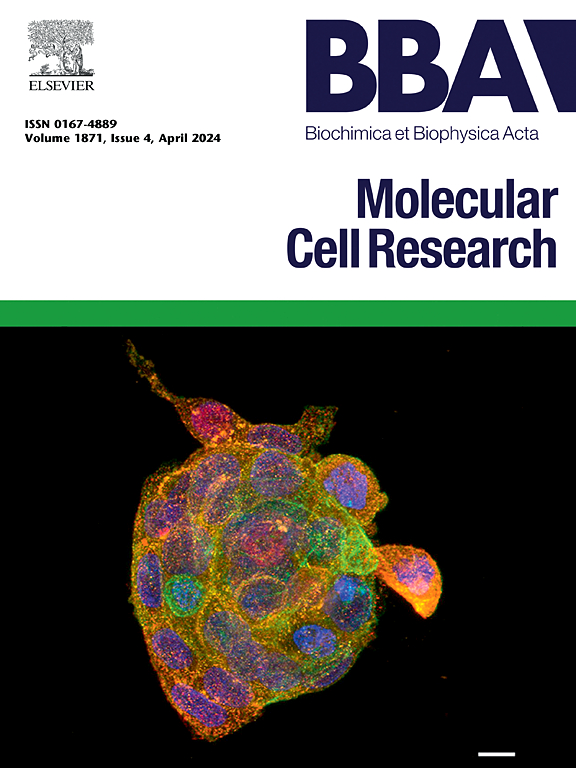Apurinic/apyrimidinic endonuclease 1 (APE1) prevents alopecia by promoting regeneration of hair follicles
IF 4.6
2区 生物学
Q1 BIOCHEMISTRY & MOLECULAR BIOLOGY
Biochimica et biophysica acta. Molecular cell research
Pub Date : 2025-04-04
DOI:10.1016/j.bbamcr.2025.119951
引用次数: 0
Abstract
Hair follicle (HF) regeneration, which relies on the self-renewal and differentiation capacity of bulge cells, involves multiple molecular mechanisms. In this study, we found that Apurinic/apyrimidinic endonuclease 1 (APE1) acts as a positive regulator of spontaneous and depilation-induced HF regeneration. Loss of APE1 leads to hair thinning and delayed HF transition from telogen to anagen. As shown in our systematic conditional Apex1 knockout (Apex1flox/floxCre-ER+) mouse model, Apex1−/− mice gradually lost hair coat over time and eventually became hairless after 10 months. Histological analyses revealed that Apex1 knockout caused the retarded growth of HF and the reduction of hair density, as a result of repressed proliferation of bulge cells by downregulating the β-catenin pathway. Moreover, APE1 is indispensable in the depilation-induced HF regeneration, and its deficiency contributes to the depletion of bulge cells, which in turn causes failure of hair growth. These findings highlight the indispensable role of APE1 for HF activation, maintenance, and growth.
求助全文
约1分钟内获得全文
求助全文
来源期刊
CiteScore
10.00
自引率
2.00%
发文量
151
审稿时长
44 days
期刊介绍:
BBA Molecular Cell Research focuses on understanding the mechanisms of cellular processes at the molecular level. These include aspects of cellular signaling, signal transduction, cell cycle, apoptosis, intracellular trafficking, secretory and endocytic pathways, biogenesis of cell organelles, cytoskeletal structures, cellular interactions, cell/tissue differentiation and cellular enzymology. Also included are studies at the interface between Cell Biology and Biophysics which apply for example novel imaging methods for characterizing cellular processes.

 求助内容:
求助内容: 应助结果提醒方式:
应助结果提醒方式:


